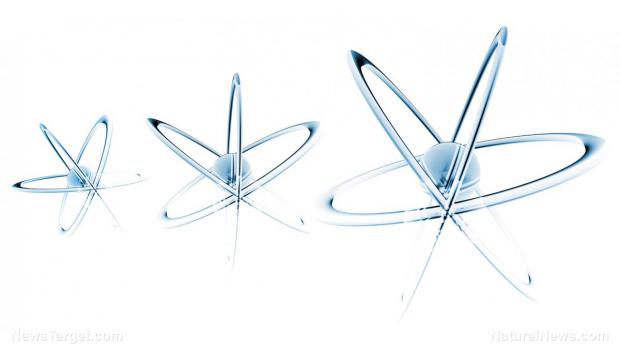
Breaking News
 How a 27-Year-Old Codebreaker Busted the Myth of Bitcoin's Anonymity
How a 27-Year-Old Codebreaker Busted the Myth of Bitcoin's Anonymity
 Old World Order is COLLAPSING: The Death of Europe and the Rise of China
Old World Order is COLLAPSING: The Death of Europe and the Rise of China
 Energy Secretary Expects Fusion to Power the World in 8-15 Years
Energy Secretary Expects Fusion to Power the World in 8-15 Years
 South Koreans Feel Betrayed Over Immigration Raid, Now Comes the Blowback
South Koreans Feel Betrayed Over Immigration Raid, Now Comes the Blowback
Top Tech News
 Tesla Megapack Keynote LIVE - TESLA is Making Transformers !!
Tesla Megapack Keynote LIVE - TESLA is Making Transformers !!
 Methylene chloride (CH2Cl?) and acetone (C?H?O) create a powerful paint remover...
Methylene chloride (CH2Cl?) and acetone (C?H?O) create a powerful paint remover...
 Engineer Builds His Own X-Ray After Hospital Charges Him $69K
Engineer Builds His Own X-Ray After Hospital Charges Him $69K
 Researchers create 2D nanomaterials with up to nine metals for extreme conditions
Researchers create 2D nanomaterials with up to nine metals for extreme conditions
 The Evolution of Electric Motors: From Bulky to Lightweight, Efficient Powerhouses
The Evolution of Electric Motors: From Bulky to Lightweight, Efficient Powerhouses
 3D-Printing 'Glue Gun' Can Repair Bone Fractures During Surgery Filling-in the Gaps Around..
3D-Printing 'Glue Gun' Can Repair Bone Fractures During Surgery Filling-in the Gaps Around..
 Kevlar-like EV battery material dissolves after use to recycle itself
Kevlar-like EV battery material dissolves after use to recycle itself
 Laser connects plane and satellite in breakthrough air-to-space link
Laser connects plane and satellite in breakthrough air-to-space link
 Lucid Motors' World-Leading Electric Powertrain Breakdown with Emad Dlala and Eric Bach
Lucid Motors' World-Leading Electric Powertrain Breakdown with Emad Dlala and Eric Bach
 Murder, UFOs & Antigravity Tech -- What's Really Happening at Huntsville, Alabama's Space Po
Murder, UFOs & Antigravity Tech -- What's Really Happening at Huntsville, Alabama's Space Po
Nanomaterials called metal-organic frameworks (MOFs) can give plants "super" abilities,

(Natural News) While much has been written about nanomaterials and the benefits they will give humans, not as much thought has been given to how they can benefit plants. A recent study looks to change that, exploring how nanomaterials may be able to give plants "super" abilities.
The researchers, who presented their study at the American Chemical Society's Spring 2019 National Meeting & Exposition, compare it to how humans have been introducing foreign materials to plants for thousands of years.
"One example of this is flower dyeing," says lead researchers Dr. Joseph Richardson. "You'd immerse a cut flower stem into some dye, and the dye would be taken up through the stem and penetrate into the flower petals, and then you'd see these beautiful colors."
Using nanomaterials takes this into a more high-tech direction, with benefits that are more than just aesthetic.
Putting nanomaterials inside plants
Plants are readily able to absorb water and molecules dissolved in fluids thanks to their extensive vascular networks. That said, it's much harder for larger materials and nanoparticles, such as metal-organic frameworks (MOF), to penetrate a plant's roots.
With this in mind, Richardson and his colleagues at the University of Melbourne wondered if they could feed MOF precursors to the plants, which the latter would then convert into finished nanomaterials.



